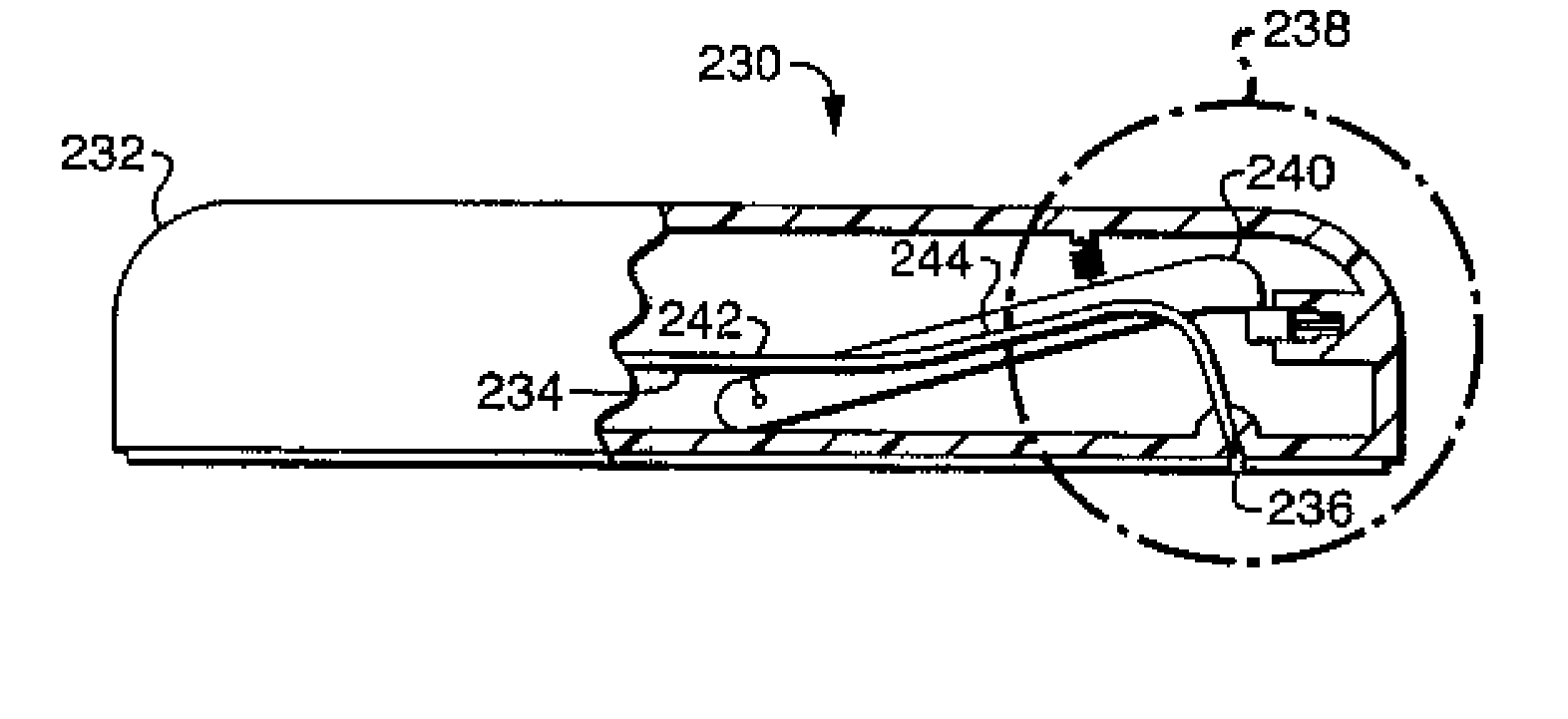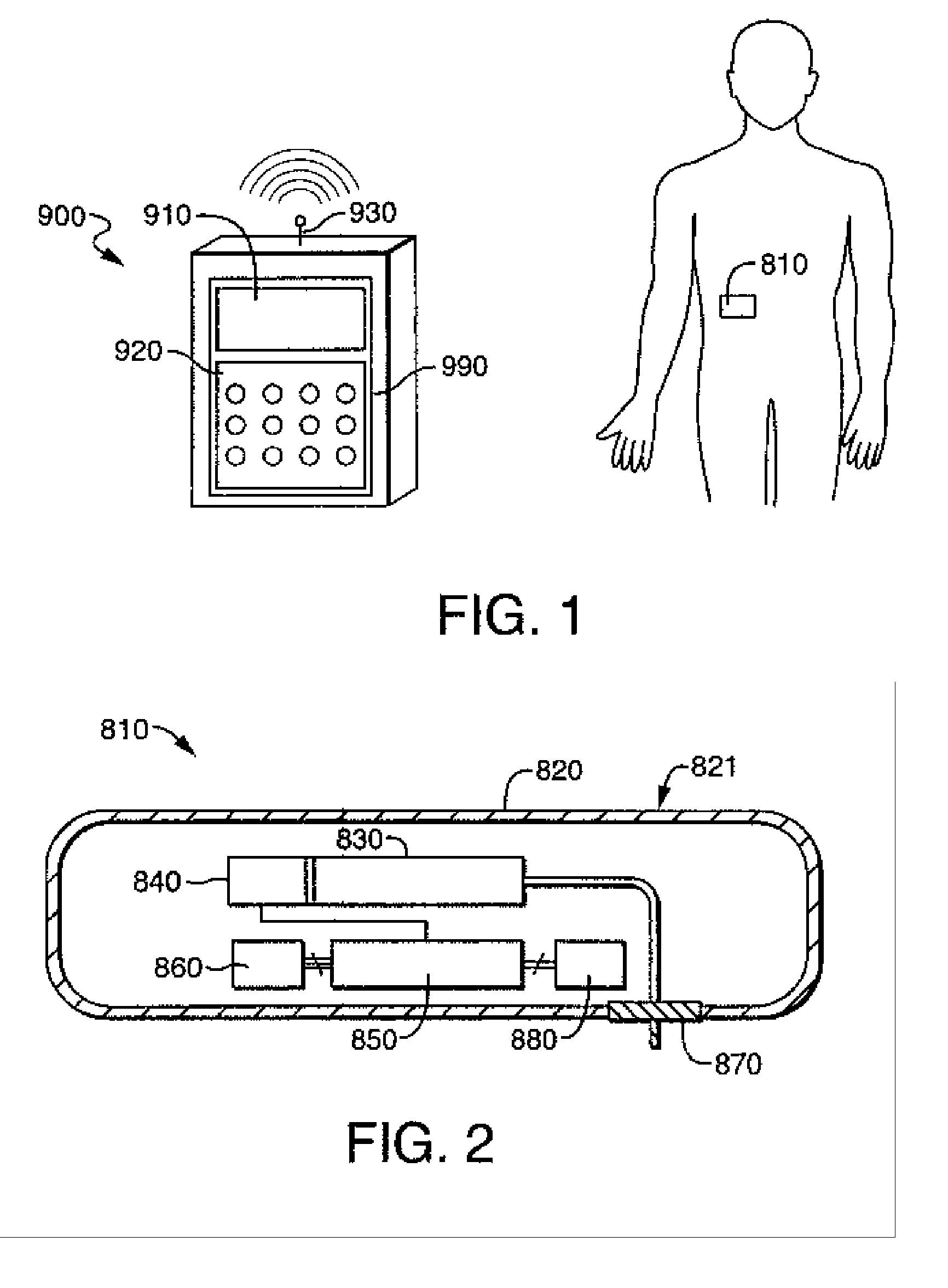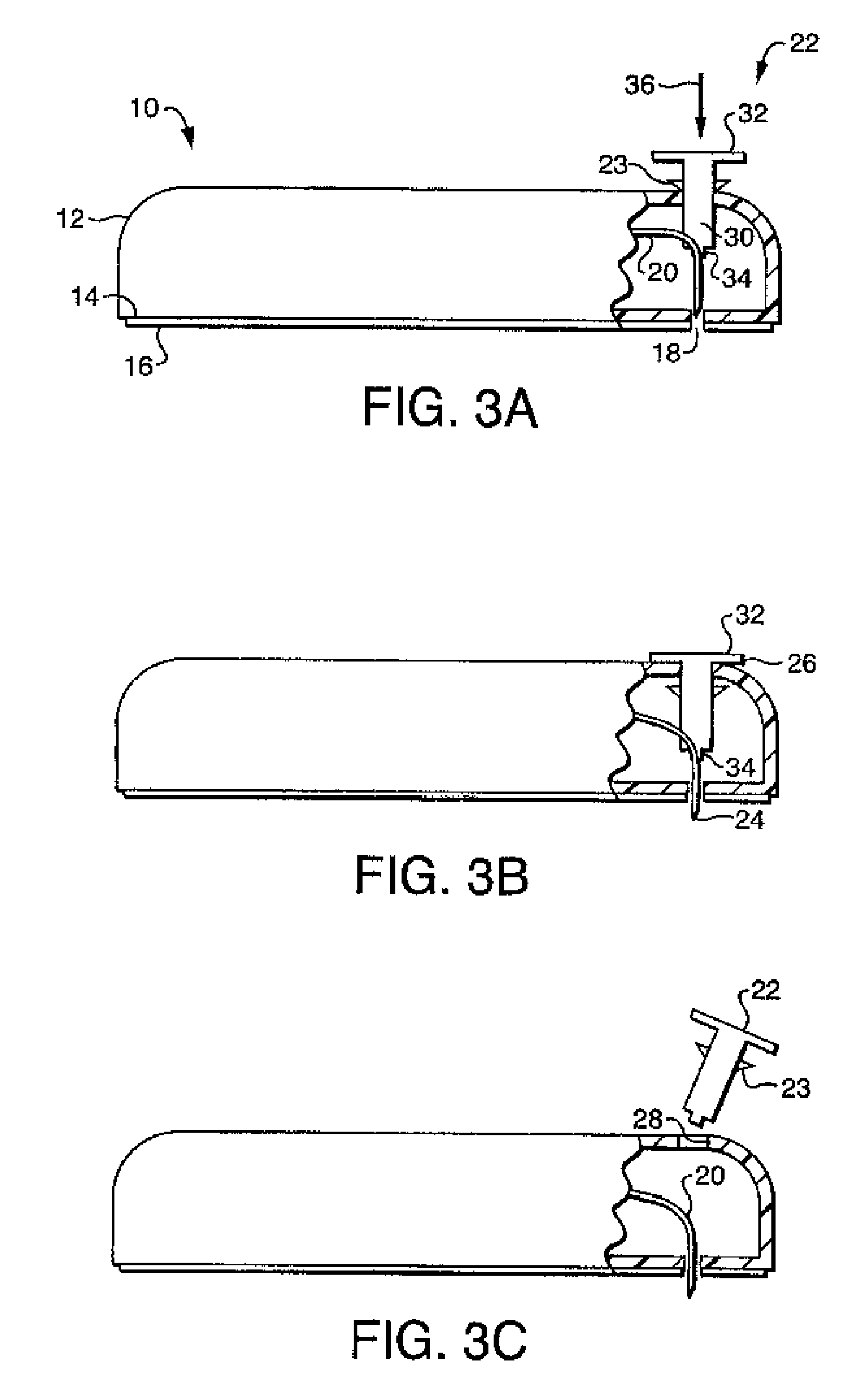Transcutaneous fluid delivery system
a fluid delivery system and transcutaneous technology, applied in the direction of pharmaceutical delivery mechanism, medical preparations, other medical devices, etc., can solve the problems of limiting the flow rate and profile of simple therapy, affecting the mobility and lifestyle of patients, and severely restricting the control of drug administration, etc., to avoid general upkeep and maintenance, easy to carry, and low cost
- Summary
- Abstract
- Description
- Claims
- Application Information
AI Technical Summary
Benefits of technology
Problems solved by technology
Method used
Image
Examples
first embodiment
[0125] Referring now to FIG. 3A-3C, the fluid delivery device of the present invention includes a housing 12 for containing the reservoir and other control devices. The footprint of the housing 12 may be square, rectangular, oval or other geometry, depending on the size requirements for containing the reservoir and other control elements as well as the comfort requirements of the user. Housing 12 includes a first wall 14 having, preferably, an adhesive material 16 attached thereto for enabling the housing 12 to be adhered to the skin of the patient, thereby facilitating secured delivery of fluid to the person. While, in the preferred embodiment, the attachment means, as shown in FIG. 3, is an adhesive tape attached to the first wall 14 of the housing 12, it will be understood that any means for securing the housing 12 to the patient, such as simply taping the housing 12 to the skin of the patient, or securing the housing to the patient by means of a strap or other similar device.
[01...
embodiment 150
[0135]FIG. 6 shows a further embodiment 150 of the present invention. Fluid delivery device 150 includes a housing 152 and actuator 153, which is similar to the actuator 120 described with reference to FIGS. 5A and 5B. Accordingly, elements of actuator 153 which are the same as elements of actuator 120 will be described using the same reference numerals used in FIGS. 5A and 5B. As shown in FIG. 6, actuator 153 includes plunger device 118 including a head portion 124 and a cannula engagement portion 126. Plunger device 118 is frictionally engaged between walls 136 and 138, and wall 138 includes protrusion 130 which engages head portion 124 of plunger device 118 to prevent plunger device 118 from being driven in the direction shown by arrow 140 by biasing spring 128 which, as shown in FIG. 6, is in its compressed, energized state. Actuator 153 includes a lever 154 having a first end 155 in contact with the head portion 124 of plunger device 118 and a second end 156 which is in contact...
embodiment 230
[0138] Referring now to FIG. 9A-9C, a further embodiment 230 of the present invention will be described. Fluid delivery device 230 includes a housing 232 having an exit port 236. Cannula 234 is enclosed within the housing 232 in the first position shown in FIG. 9A and in the inset 238 shown in FIG. 9B. Fluid delivery device 230 further includes a rod 240 which is attached to the housing 232 at a pivot point 242 and which is attached to the cannula 234 along its length at 244. An injection actuation device includes a latch mechanism 246 having a latch 248 which contacts the end 249 of rod 240 for maintaining the rod 240 in the first position shown in FIG. 9A. A biasing spring is coupled between rod 240 and the housing 232. Biasing spring 250 is in a compressed, energized state when the rod 240 is in the first position, and thus forces the rod against latch 248. Latch mechanism 246 further includes an electrically driven latch actuator 252 which, upon the application of an electrical ...
PUM
 Login to View More
Login to View More Abstract
Description
Claims
Application Information
 Login to View More
Login to View More - R&D
- Intellectual Property
- Life Sciences
- Materials
- Tech Scout
- Unparalleled Data Quality
- Higher Quality Content
- 60% Fewer Hallucinations
Browse by: Latest US Patents, China's latest patents, Technical Efficacy Thesaurus, Application Domain, Technology Topic, Popular Technical Reports.
© 2025 PatSnap. All rights reserved.Legal|Privacy policy|Modern Slavery Act Transparency Statement|Sitemap|About US| Contact US: help@patsnap.com



